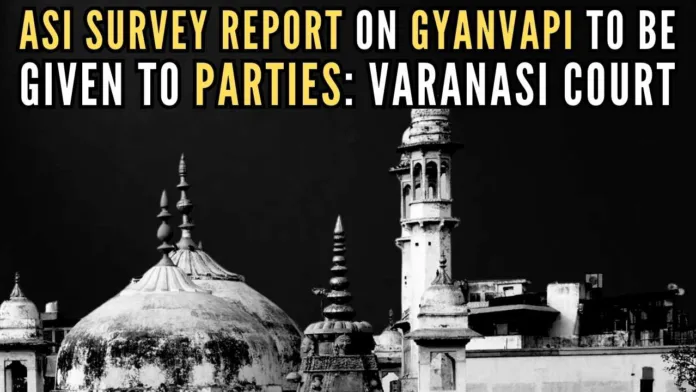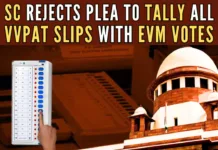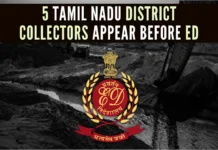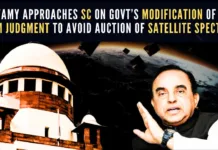
Hindu, Muslim sides to get access to ASI’s survey report, rules Varanasi court in Gyanvapi – Kashi Vishwanath case
In a major development, a Varanasi district court on Wednesday directed that the scientific survey report prepared by the Archaeological Survey of India (ASI) on the Gyanvapi mosque in July 2023 be supplied to all parties to the dispute. Judge A K Vishvesha ordered that all parties to the case should have access to the report about the mosque. After the distribution of the ASI report, all parties will have the right to comment on the report’s findings.
“Both the parties to the suit must be provided copies of the survey report so that they can file objections against the ASI report if they think it proper. Without providing a copy of the survey report to the parties, it will not be possible for them to file objections against it,” said the Court.
For this purpose, the sealed envelope containing the survey report presented by the ASI can be opened by the appeal clerk, the Court said. “Subsequently, copies can be provided to the concerned parties upon their request, following the relevant legal provisions and rules,” the Court added. In July last year, the court had ordered the Director of the ASI to conduct a scientific survey of the Gyanvapi mosque premises, excluding the area previously sealed by the Supreme Court (wuzukhana or an ablution pond).
Soon ASI carried out the survey.
In August, last year, the Supreme Court rejected the plea by the Muslim party challenging the survey and said that the High Court order for the survey does not warrant interference by the apex court at this stage and such a survey was conducted even in the Ayodhya case. The Muslim parties had also filed an application under Order VII Rule 11 of the CPC challenging the maintainability of the suit on grounds that the Places of Worship Act of 1991, which was introduced at the height of the Ram Janmabhoomi movement, seeks to protect the status of all religious structures as it stood on August 15, 1947. Both the district court and the High Court had rejected the same and held the suit to be maintainable.
For all the latest updates, download PGurus App.
- Supreme Court rejects plea to tally all VVPAT slips with EVM votes; says ‘no going back to paper ballot’ - April 26, 2024
- US report citing human rights violations is deeply biased: India - April 25, 2024
- Kotak Mahindra Bank shares tank 13%. Market Cap erodes by Rs.37,721 cr post-RBI action - April 25, 2024











Happy on the happening developments
Peaceful community is fighting a losing battle.
Peaceful community should gracefully vacate & handover some pre-identified disputed mosques to Hindus, through direct negotiations & keep calm than going ballistic Hai Allah Hai Allah
Any siva temple, one goes , immediately finds the “Nandi facing the Siva-lingam”. The same scene also , one come across in Kasi- viswanath temple. Nandi is facing towards one direction and in that direction , should be Siva-ling. But , there is mosque. If one applies common sense, mosque was not there before Muslim invasion of the Bharat. Since time -immemorial , Siva temple is there. Hence, mosue came there around 1500 era. Irfan Habid wants to fool us , there are Budist statues also there. Communists, it would be better , if you all keep quite. Ohterwise, the public would give you very fitting reply very soon.